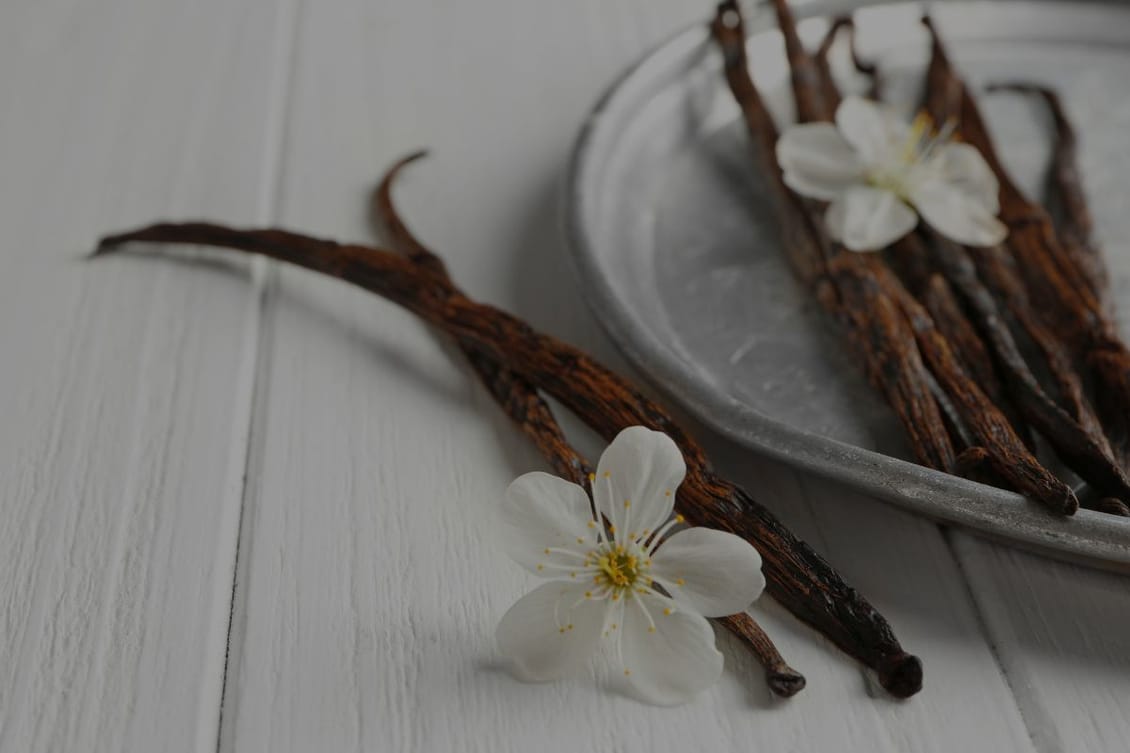
Have you ever described something as ‘vanilla’?
In the English language, we use the word for things that are dull, uninventive; unadventurous.
But we want to make a case in defence of vanilla: because it didn’t get to one of the world’s favourite flavours by being boring. And next time you’re at the ice cream parlour and you ask for vanilla, we want you to feel proud of your very good choice.
It comes from orchids*.
Yes, seriously – vanilla beans aren’t actually beans at all. They’re the seed pods of orchids from a genus called Vanilla (of course), and the pods are full of grainy, sticky, fragrant black paste. Each of the tiny grains in that paste is a vanilla seed.
*But much of the vanilla flavouring available today, and used in food products, is synthetically manufactured.
Not only that, but the Vanilla genus orchid is incredible: a vining plant that can reach up to 300 feet when it thrives in its native tropical environment.
If you’ve ever wondered why vanilla and chocolate go so well together, it’s because they’ve always been together. In its native tropical forests of Mesoamerica, the vanilla orchid grew wild alongside its fellow native cacao tree.
It’s believed that the Maya people combined vanilla, cacao, and other spices to make a rich, delicious beverage. And in the 16th century, Spanish conquistador Hernán Cortés is credited with bringing both flavours to Europe – where they’ve been used as a delicious team ever since.
Vanilla is absolutely not a mundane choice. After the ingredient was introduced to Europe, growers attempted to establish crops – and they did manage to grow the orchid, but they didn’t manage to persuade it to produce the seed pods that contain the flavour.
Why?
Because the vanilla orchid’s natural pollinator is the Melipona bee. It doesn’t exist in Europe. And without the right bees, there’s no vanilla.
In the mid-19th century, a 12-year-old boy named Edmond Albius living on the island of Réunion discovered a method to pollinate vanilla flowers by hand. It took painstaking manual labour – but his technique enabled the cultivation of vanilla in new tropical locations, including Madagascar (which is why you can now buy Madagascan vanilla in many grocery stores around the world), and the Comoros Islands.
Edmond’s technique is still in use today. And pollinating the vanilla orchid is still an incredibly high-maintenance endeavour. A toothpick is inserted into the bottom of the flower, and used to tear it in order to expose the plant’s reproductive system. Then the flap and pollen is located and carefully lifted out using the toothpick.
This is a big part of the reason why natural vanilla is still the second-most expensive spice in the world, after saffron.
We definitely don’t think so.
We’re choosing vanilla this week – and embracing its genuine position as one of the most complex flavours in the world, with one of the most intriguing stories behind it.
Take your seat at the InFlavour table, a government-backed and world-leading B2B food event by Tahaluf.
E-mail address SubmitWant to keep up to date with all our latest news and information? Enter your name below to be added to our mailing list.
E-mail address Submit